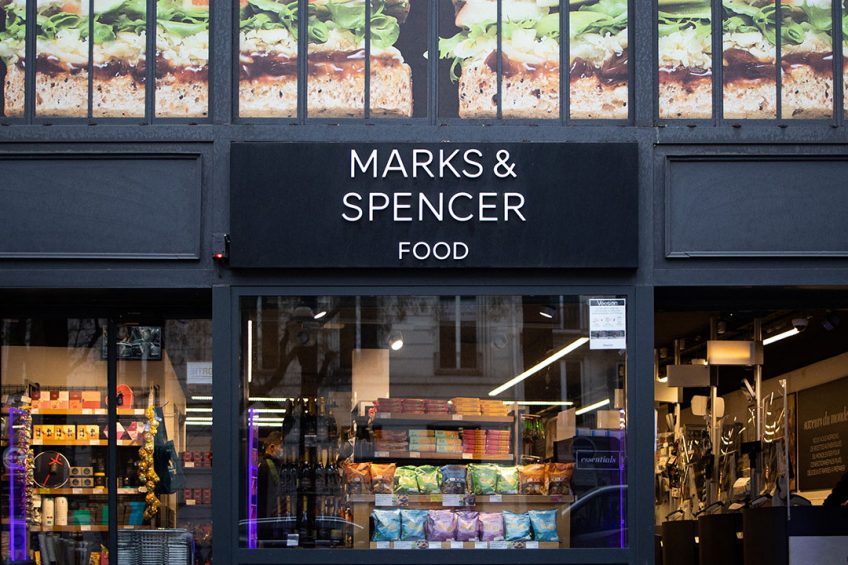Looking ahead at UK poultry trends: A retail update

UK retailer Marks and Spencer has moved to 100% British chicken, including ingredients, across its whole range of birds and has announced a rebrand of its Hubbard slower growing, welfare friendly bird. The retail chain previously sourced its chicken from a range of EU and British farms.
The move comes at a time when sales of poultry meat in the UK continue to increase as sources (Kantar) show the sector outperforming other meat proteins. Olivia Nicolson, Marks and Spencer agriculture manager for poultry, pork and game supply chain, said the poultry meat sector was in an excellent position. Total UK poultry market for the last 12 weeks of sales data showed fresh poultry sales of £692m (US$ 951,5m) and was the leading meat protein worth more than beef (£606m) (US$ 842m), fresh fish (£466m) (US$ 647,5m), pork (£192m) (US$ 266,8m) and lamb (£160m) (US$ 222,3m). “It is a cheaper, more versatile protein for mid-week meals but can also expand into bigger family packs really easily so that families can cook it and use it for the next day,” she added.
Growth ahead of market
Year on year, fresh poultry has grown ahead of the market at 13.5% while eggs rose by an astonishing 28.5%. Cooked poultry however declined by 1.4% due to Covid-19 and the lack of food on the move outlets. Commenting on poultry categories, Ms Nicholson said Tesco had the largest share of the market for both primary whole birds and primary portions, followed by Asda, Sainsburys, Aldi, Morrisons and Lidl. Up to 40% of chicken sales are of whole birds, 35% are of breasts, 23% dark meat and 5% ingredient. Each retailer markets their chickens in a slightly different way. Marks and Spencer has the largest percentage of whole birds (66.4%), which are liked by an older customer base with smaller households (2-4 people, weight range 2.-2.2kgs). Asda and Tesco have the highest proportion of breast fillet sold (34% and 32%), while discounters Lidl and Aldi sell the most dark meat (31.4% and 26.4%).
4 tiers of animal welfare
Commenting on Marks and Spencer’s current chicken policy, Ms Nicholson said the company’s range involved 4 tiers of chicken driven by welfare and production system. Its base standard fast growing bird meets the industry’s Red Tractor Assurance scheme and has a stocking density of 30kg per square metre. Birds have enrichments and there is natural lighting in sheds. The company sells organic and free-range birds which sell particularly well through the up market Ocado online grocery chain that Marks and Spencer bought into last year.
The 4th type of bird is the slower growing high welfare – an indoor Hubbard bird which has been relaunched this month as Oakham Gold. First released last year, customers said they didn’t understand what the bird delivered. It will carry the RSPCA logo, have more attractive packaging, and include wording around corn-fed and slower growing, which hopefully will resonate more with customers.
Poultry producers lead the way on global animal welfare
According to the latest annual Business Benchmark on Farm Animal Welfare (BBFAW) report, poultry producers lead the way on global animal welfare. Find out more…
Support British farmers
Commenting on the move to source 100% British chicken, she said she was excited by the announcement: “We’re really proud of this move and really hope this supports British farmers through what have been these challenging times. I want to say thank you to our suppliers and select farm members who have helped deliver this over the past few months,” she told delegates at the recent South West Chicken Association meeting. Double digit growth has been reported for coated poultry in the past year. Packaging has been redesigned to appeal to families with lots of different flavours, she added.
Speaking about the firm’s focus for the future, she highlighted 3:
- Delivering on the British Chicken Commitment by 2026 across its entire chicken portfolio to meet customer demand
- Establishment of behavioural assessment of birds and the reduction of antibiotics on farms
- Environment and sustainability – from farm to fork













